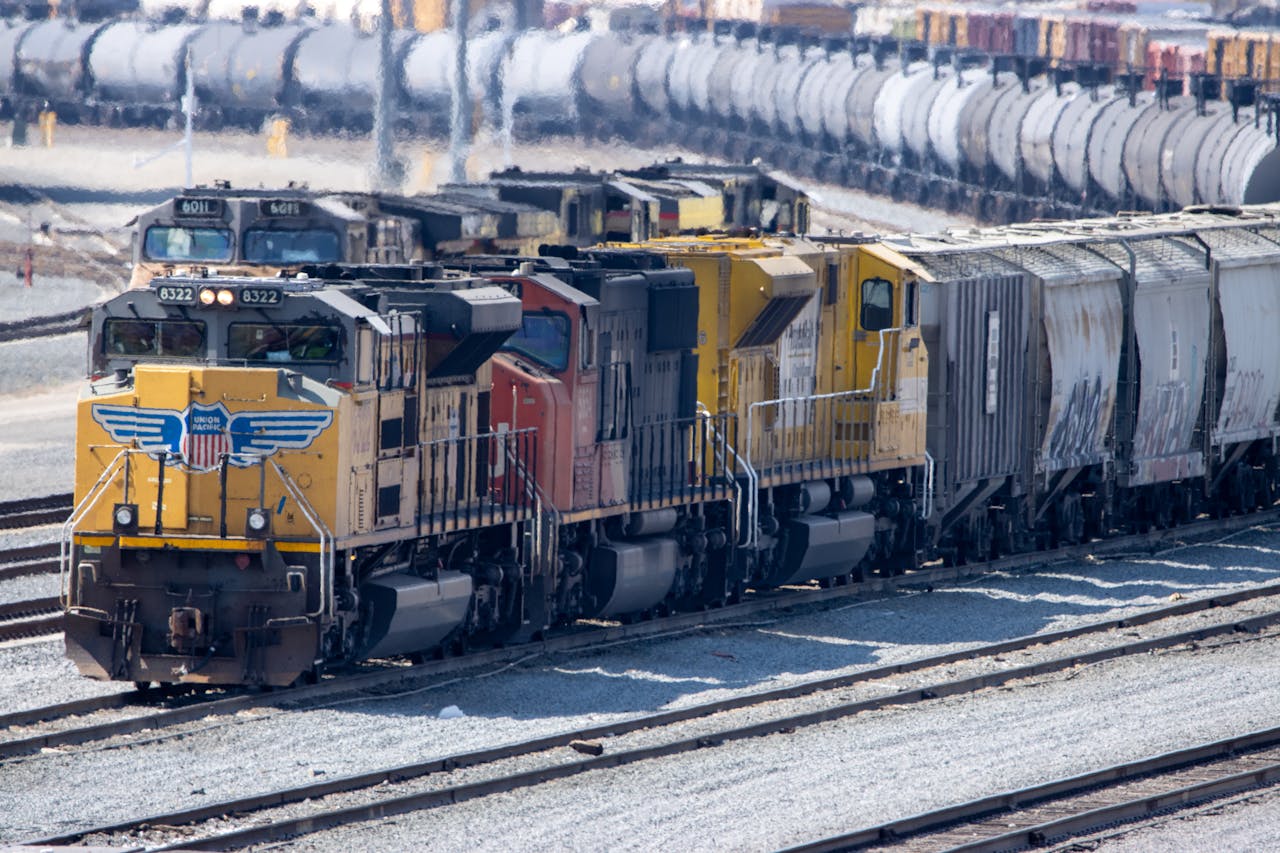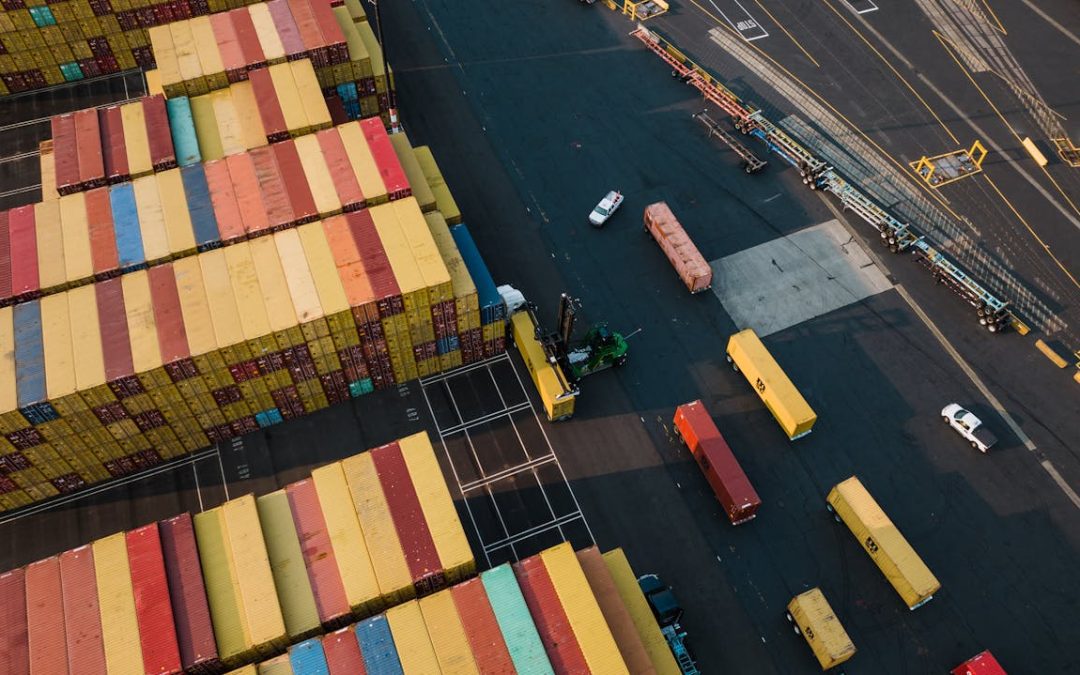যখন এটি আন্তর্জাতিক শিপিংয়ের কথা আসে, পরিবহণের সমস্ত পদ্ধতি সমান হয় না। মিলেনিয়াম কার্গোতে, আমরা একটি মাল্টিমোডাল মডেলের উপর কাজ করি যা বলার অপেক্ষা রাখে না, এর অর্থ যাত্রার প্রতিটি পর্যায়ে আপনার পণ্যগুলির জন্য পরিবহণের সঠিক মোড বেছে নেওয়া। তবে পরিবহণের সঠিক পদ্ধতিটি কী এবং এটি আপনার ব্যয় এবং আপনার দক্ষ বিতরণে কী প্রভাব ফেলবে? পার্থক্যগুলি ভেঙে ফেলার জন্য আমরা এখানে আছি।
পরিবহণের একটি মোড বেছে নেওয়ার সময় প্রধান বিবেচনাগুলি
সিদ্ধান্ত নেওয়ার সময় কয়েকটি জিনিস রয়েছে যা অবশ্যই জবাবদিহি করতে হবে। এগুলি:
- গতি - ডেলিভারির সময়গুলি প্রায়শই সবচেয়ে বড় ড্রাইভিং ফ্যাক্টর হয়, প্রায়শই আপনি আপনার চিন্তায় পিছনের দিকে কাজ করেন, সিদ্ধান্ত নেন যে আপনার কখন পণ্যগুলি পৌঁছানোর প্রয়োজন হয় এবং সেখান থেকে আপনার বিকল্পগুলি কী তা গণনা করে। অবশ্যই পরিবহণের মোডের চেয়ে আরও অনেক কিছুই রয়েছে, অবশ্যই আপনার সম্ভাব্য বিলম্ব, শুল্ক পদ্ধতি এবং আরও অনেক কিছু বিবেচনা করা দরকার - তবে সঠিক পরিবহণের ধরণটি বেছে নেওয়া সবচেয়ে বেশি পার্থক্য করে।
- ব্যয় - তালিকার পরবর্তী বাজেট। পরিবহণের পদ্ধতিটি আপনার পণ্যের ব্যয় কতটা শিপিংয়ের উপর উল্লেখযোগ্য প্রভাব ফেলে। পণ্য শিপিংয়ের সঠিক মোড সম্পর্কিত অনেক সিদ্ধান্ত ব্যয় এবং গতির মধ্যে ভারসাম্যের মধ্যে নেমে আসে। মিলেনিয়াম কার্গোতে, আমরা আপনার ব্যয়কে কম রাখার জন্য পর্দার আড়ালে অক্লান্ত পরিশ্রম করি এবং বিভিন্ন পরিবহন মোডের তুলনা করা সেই অধিকারটি পাওয়ার মূল বিষয়।
- কার্গো প্রকার - আপনি যা শিপিং করছেন তাও বিবেচনা করা দরকার। আপনার কার্গো কি বিনষ্টযোগ্য? এটি কি রেফ্রিজারেশন দরকার? এটি ভঙ্গুর, বা বড় আকারের? এই প্রশ্নের উত্তর দেওয়া পরিবহন বিকল্পগুলি বিবেচনা করার সময় সহায়তা করে।

- দূরত্ব এবং রুট - প্রায়শই একাধিক বিকল্প রুট থাকে যা আপনার পরিবহণের পছন্দগুলিকে প্রভাবিত করবে। পুরো শিপিংয়ের বিষয়টি ব্যাপকভাবে দেখার সময়, আপনার কার্গো থেকে এ থেকে বিতে পাওয়া প্রায়শই বেশ কয়েকটি পছন্দ, পরিবহণের পদ্ধতিগুলি স্যুইচ করা এবং একাধিক কারণের ভিত্তিতে রুটগুলি বেছে নেওয়া এবং ব্যয়, প্রাপ্যতা, দক্ষতা এবং এমনকি ভৌগলিক এবং রাজনৈতিক বিবেচনার অন্তর্ভুক্ত থাকতে পারে।
- পরিবেশগত প্রভাব - শিপিং শিল্প আন্তর্জাতিক ফ্রেইট বিশ্বে যে প্রভাব ফেলেছে তা হ্রাস করার জন্য কঠোর পরিশ্রম করছে। আপনার পরিবহণের যে পরিবেশগত প্রভাব পড়বে তা মূল্যায়ন করা শিপিং সঠিকভাবে পাওয়ার একটি গুরুত্বপূর্ণ অঙ্গ। পরিবহনের কোনও পদ্ধতি বেছে নেওয়ার সময়, কার্বন নিঃসরণ এবং অন্যান্য পরিবেশগত বিবেচনাগুলি বিবেচনায় নেওয়া জরুরি।
মিলেনিয়াম কার্গোতে, আমাদের এমন বিশেষজ্ঞদের একটি দল রয়েছে যারা নিয়মিত কাজ করেন, প্রযুক্তির যে কোনও পরিবর্তন, শিপিং রুট, কার্গো সুরক্ষা, পরিবহন অবকাঠামো, রাজনৈতিক পরিবর্তন এবং আরও অনেক কিছু নিয়ে আপ টু ডেট রাখেন, আপনার কার্গো যথাসম্ভব দক্ষতার সাথে তার গন্তব্যে পৌঁছেছে তা নিশ্চিত করার জন্য। আপনার ব্যয় কম রাখা হয়েছে, আপনার বিতরণ যতটা সম্ভব দ্রুত এবং আপনার বিশ্বব্যাপী পরিবেশগত প্রভাব কম রয়েছে তা নিশ্চিত করার জন্য পরিবহন বিকল্পগুলি নিয়ে আলোচনা করব, আমরা আপনার সাথে একসাথে কাজ করব।
পরিবহন মোডগুলির একটি ওভারভিউ
আপনার কার্গো নিরাপদে এবং দক্ষতার সাথে এর উত্স থেকে এর গন্তব্যে পেতে চারটি প্রধান পরিবহন মোড উপলব্ধ। এগুলি:
- সি ফ্রেইট -আন্তর্জাতিক শিপিংয়ের সর্বাধিক ব্যবহৃত ফর্ম, সমুদ্রের মালবাহী ভারী, ভারী এবং অ-জরুরি পণ্য পরিবহনের জন্য আদর্শ। এটি ধীর তবে ব্যয়বহুল এবং প্রযুক্তিগত বর্ধনের প্রতিটি বছরের সাথে আরও পরিবেশগতভাবে শব্দ পাওয়া।
- এয়ার ফ্রেইট -বিমানের মাধ্যমে আপনার পণ্যগুলি প্রেরণ করা অত্যন্ত দ্রুত এবং উপযুক্ত উপযুক্ত, যখন শিপিং বিনষ্টযোগ্য কার্গো, বা অন্যান্য উচ্চ-মূল্যবান আইটেমগুলি দ্রুত তাদের গন্তব্যে পৌঁছানোর প্রয়োজন হয়। যেমনটি প্রত্যাশা করা যেতে পারে, এয়ার ফ্রেইট সবচেয়ে ব্যয়বহুল বিকল্প, বিশেষত ভারী বা ভারী আইটেমগুলির জন্য।
- রোড ফ্রেইট -ঘরে ঘরে দক্ষতার প্রস্তাব দেওয়া, রাস্তাটি সাধারণত সমস্ত মাল্টিমোডাল শিপিংয়ের কমপক্ষে কিছু অংশ গঠন করে। এটি নমনীয়, যে কোনও জায়গায় পেতে সক্ষম এবং সংক্ষিপ্ত রুটের জন্য উপযুক্ত।
- রেল মালবাহী -জমির উপরে কার্গো বড় পরিমাণে সরানোর সময়, রেল সর্বাধিক ব্যয়বহুল প্রক্রিয়া হিসাবে রয়ে গেছে। রাস্তার চেয়ে সস্তা, এটি প্রায়শই একটি মাল্টিমোডাল সমাধানের অংশ গঠন করে, বিশেষত যখন দেশীয়ভাবে শিপিং করে।
মাল্টিমোডাল ফ্রেইট ফরোয়ার্ডিং পরিষেবা হিসাবে, সহস্রাব্দ কার্গো এই চারটি পরিবহন মোডের মিশ্রণ এবং মেলে এমন একটি শীর্ষ মানের পরিষেবা সরবরাহ করার জন্য যা আপনার পণ্যগুলি শুরু থেকে শেষ করা হবে, যেখানেই এটি বিশ্বে থাকতে পারে।

শিপিং সমীকরণ সমাধান করা
সহস্রাব্দে, আমরা আপনার পণ্যগুলি যেখানে থাকতে হবে সেখানে পাওয়ার জন্য শিপিং সমাধানগুলিকে প্রভাবিত করে এমন অনেকগুলি কারণের ভারসাম্য বজায় রাখতে আমরা অভিজ্ঞতা এবং প্রচুর গণনা ব্যবহার করি। এর মধ্যে কয়েকটি পরিস্থিতি বিবেচনা করুন:
- আপনার কারখানা থেকে মার্কিন যুক্তরাষ্ট্রে সরবরাহকারী পর্যন্ত কুলুঙ্গি বৈদ্যুতিন উপাদানগুলি দ্রুত শিপিং খুঁজছেন? এয়ার ফ্রেইট উচ্চ ব্যয়ে আসতে পারে তবে আপনার সরবরাহকারীকে একটি চলমান সরবরাহ শৃঙ্খলার একটি গুরুত্বপূর্ণ অংশ হতে সক্ষম করার জন্য প্রয়োজনীয় দ্রুত শিপিং সরবরাহ করবে, এটি নিশ্চিত করে যে আপনার পণ্যটি দ্রুত গতিশীল শিল্পে প্রতিযোগিতামূলক রয়েছে। আপনার কারখানার গেটগুলি থেকে আপনার সরবরাহকারীর গুদামে আপনার পণ্যগুলি পেতে রোড ফ্রেইটের সাথে একত্রিত, একটি বিস্তৃত মাল্টি-মোড সমাধান প্রায়শই সঠিক উত্তর।
- জার্মানিতে ভারী যন্ত্রপাতি পাঠাচ্ছেন? রেলটি মহাদেশ জুড়ে অবিচ্ছিন্নভাবে ভারী কার্গো নেওয়ার ঘর সহ রেল সর্বাধিক ব্যয়বহুল উত্তর সরবরাহ করে। আরও একবার, রাস্তায় ঘরে ঘরে সমাধানের জন্য একটি নিখুঁত অংশীদারিত্ব সরবরাহ করে।
- চীন থেকে অ-জরুরি জিনিস আমদানি করছেন? সামুদ্রিক ফ্রেইট এখানে স্টালওয়ার্ট, আপনার শিপিংয়ের ব্যয়কে ভলিউম এবং অবিচলিত দক্ষতার সাথে কমিয়ে দিয়ে আপনার লাভকে সর্বাধিক করে তোলা। পোর্ট থেকে আপনার গুদামে আপনার বিতরণ পেতে রেল এবং রাস্তাটি নিখুঁত অংশীদার হিসাবে অবস্থিত।
সহস্রাব্দ কার্গো সহ পরিবহন মোডের সর্বাধিক উপার্জন
মিলেনিয়াম কার্গো আপনার নির্দিষ্ট শিপিংয়ের প্রয়োজনের জন্য একটি নিখুঁত মাল্টিমোডাল ট্রান্সপোর্ট সলিউশন কাঠামো তৈরি করতে দিন। আমাদের দল প্রতিটি বিবেচনার মূল্যায়ন করতে এবং এগিয়ে যাওয়ার সঠিক পরিকল্পনাটি বিকাশ করতে আপনার সাথে সরাসরি কাজ করবে। একটি দর্জি-তৈরি সমাধানের জন্য আজই আমাদের সাথে যোগাযোগ করুন

